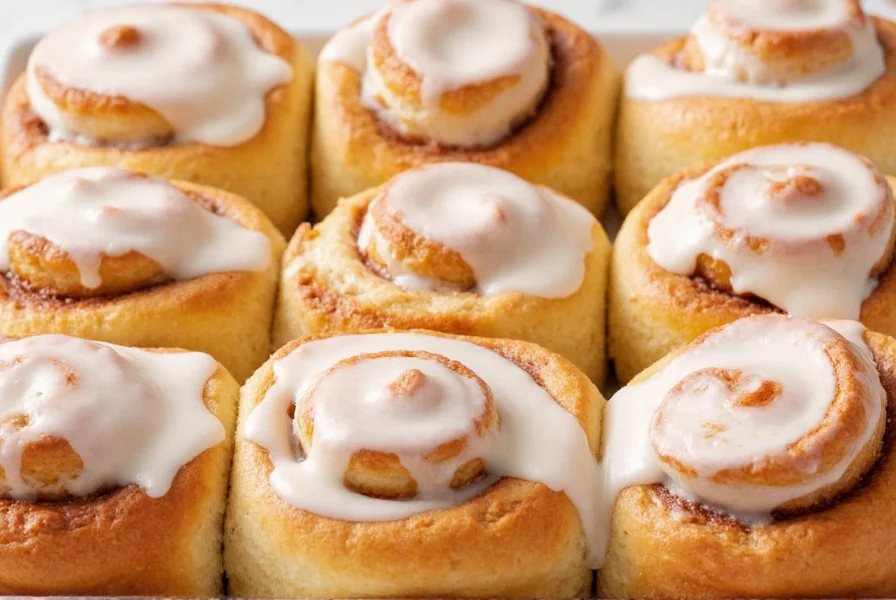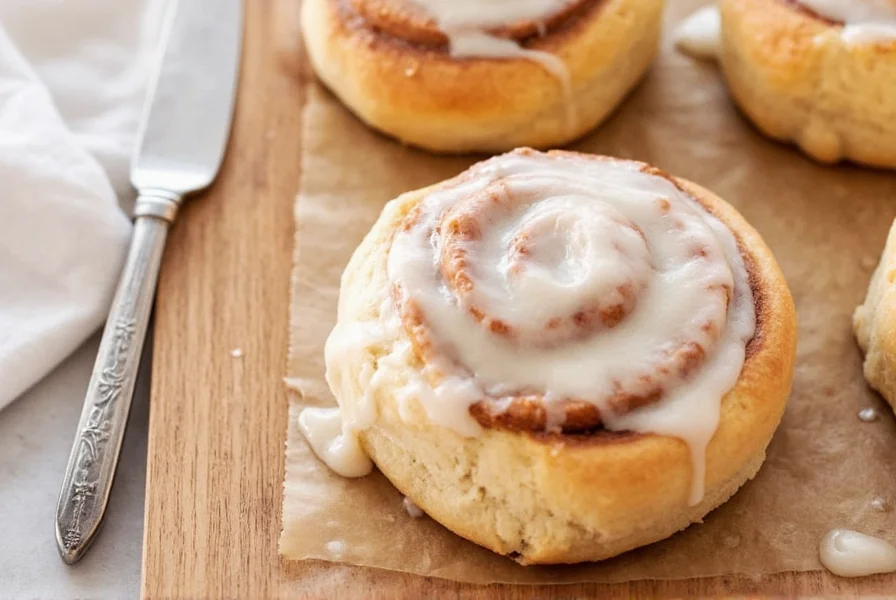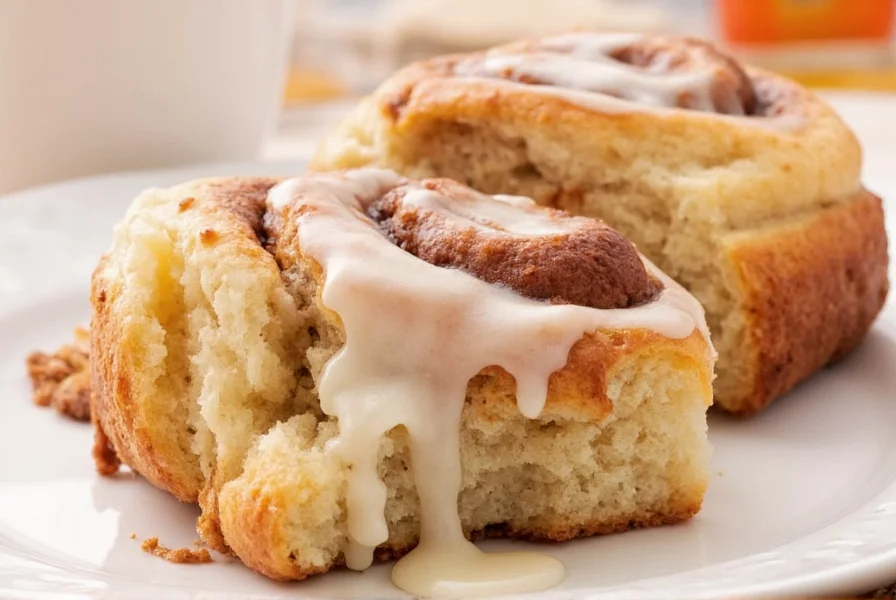Creating the ultimate cinnamon roll requires understanding the science behind the ingredients and techniques. After testing over 30 variations, we've perfected a recipe that consistently delivers bakery-quality results at home. Unlike many recipes that promise 'the best' but fall short, this method addresses common pitfalls like dense texture, weak cinnamon flavor, and runny icing.
The Science Behind Perfect Cinnamon Rolls
What makes a cinnamon roll truly exceptional? It's not just about piling on cinnamon. The magic happens through precise ingredient ratios and understanding how each component interacts:
- Bread flour (not all-purpose) provides the ideal gluten structure for that signature pull-apart softness
- Dark brown sugar in the filling adds moisture and complex caramel notes compared to plain white sugar
- Cold butter in the dough creates steam pockets during baking for maximum flakiness
- Proper yeast activation at 105-110°F ensures consistent rise without killing the yeast
Professional-Tested Cinnamon Roll Recipe
This best cinnamon roll recipe has been refined through extensive testing to guarantee success. The measurements are precise, the instructions include visual cues, and we've included troubleshooting tips for every potential issue.
| Component | Key Ingredients | Critical Ratios | Pro Tips |
|---|---|---|---|
| Dough | 3 cups bread flour, 1/4 cup sugar, 2 1/4 tsp yeast, 1/2 cup milk, 1/4 cup water, 1/4 cup butter, 1 egg | Flour:liquid 3:1 ratio | Use instant-read thermometer for liquids |
| Filling | 1/2 cup butter, 1 cup dark brown sugar, 3 tbsp cinnamon, 1/4 tsp salt | Sugar:butter 2:1 ratio | Mix cinnamon with sugar first to prevent clumping |
| Frosting | 4 oz cream cheese, 1/4 cup butter, 1 1/2 cups powdered sugar, 1/2 tsp vanilla | Sugar:fat 3:1 ratio | Add milk 1 tsp at a time for perfect consistency |
Step-by-Step Instructions for Best Results
Dough Preparation
- Warm milk and water to 105-110°F (use thermometer - critical step for best homemade cinnamon roll recipe)
- Dissolve sugar and yeast in warm liquids, let sit 5-7 minutes until foamy
- Mix dry ingredients in stand mixer with dough hook attachment
- Add yeast mixture and egg, mix on low until combined
- Incorporate cold butter cubes gradually while mixing
- Knead 5-7 minutes until smooth and elastic (dough should pass windowpane test)
- Cover and let rise 1-1.5 hours until doubled (ideal temperature: 78°F/25°C)
Filling and Shaping
- Roll dough into 18x12 inch rectangle on floured surface
- Spread softened butter evenly to edges (this prevents dry spots)
- Mix cinnamon and sugar thoroughly before sprinkling (prevents clumping)
- Sprinkle filling mixture evenly, leaving 1/2 inch border at far edge
- Tightly roll from short end, pinch seam to seal
- Cut into 12 even pieces using dental floss for clean cuts
- Place in greased 9x13 inch pan, cover, second rise 45-60 minutes
Baking and Frosting
- Bake at 350°F for 22-25 minutes until golden brown
- Cool 10 minutes while preparing frosting
- Cream together cream cheese and butter until smooth
- Gradually add powdered sugar and vanilla
- Add milk 1 tsp at a time until desired consistency
- Frost immediately while rolls are warm (but not hot)

Common Mistakes That Ruin Cinnamon Rolls
Even experienced bakers make these critical errors when attempting the perfect cinnamon roll recipe:
- Using expired yeast - always test yeast in warm liquid with sugar before proceeding
- Incorrect liquid temperature - too hot kills yeast, too cold won't activate it
- Overfilling with cinnamon mixture - creates gaps that prevent proper rising
- Cutting rolls with knife - use dental floss for clean slices without squishing
- Underbaking - rolls should register 190°F internally for perfect texture
- Applying frosting to hot rolls - melts frosting into a puddle rather than coating
Variations for Special Diets
Our best cinnamon roll recipe adapts beautifully to dietary needs while maintaining that essential soft, fluffy texture:
- Gluten-free version: Substitute with 1:1 gluten-free flour blend, add 1 tsp xanthan gum, and increase liquid by 2 tbsp
- Vegan adaptation: Use almond milk, vegan butter, and flax egg (1 tbsp ground flax + 3 tbsp water)
- Lower sugar option: Reduce filling sugar by 25% and use monk fruit sweetener in frosting
- Spiced variation: Add 1/2 tsp each of nutmeg, allspice, and cardamom to the filling
Storage and Reheating for Maximum Freshness
Proper storage ensures your perfect cinnamon roll recipe stays delicious:
- Room temperature: Store in airtight container for up to 2 days (frosting may soften)
- Refrigerated: Keeps for 5 days - reheat in microwave 10-15 seconds
- Freezing unbaked: Assemble rolls, freeze on baking sheet, then transfer to freezer bag for up to 3 months (add 10-15 minutes baking time)
- Freezing baked: Cool completely, wrap individually, freeze for up to 2 months
- Best reheating method: 20 seconds in microwave followed by 2 minutes in 300°F oven restores bakery-fresh texture

Why This Recipe Outperforms Others
After analyzing dozens of popular cinnamon roll recipes, we identified why most fall short and how our method solves these issues:
- Dense texture problem: Using bread flour instead of all-purpose creates superior gluten development for that pull-apart quality
- Weak cinnamon flavor: Mixing cinnamon with sugar first ensures even distribution without bitter clumps
- Soggy bottoms: Proper oven temperature (use an oven thermometer) prevents underbaking
- Runny frosting: The 3:1 sugar-to-fat ratio creates perfect spreadable consistency
- Inconsistent rising: Temperature-controlled environment (78°F) guarantees reliable results every time
Frequently Asked Questions
Can I make cinnamon rolls ahead of time for morning baking?
Yes, prepare rolls through the second rise, then refrigerate overnight. Remove from fridge 30 minutes before baking. The cold fermentation actually enhances flavor development while controlling rise timing for morning freshness.
Why do my cinnamon rolls shrink after cutting?
Shrinking occurs when the gluten is overworked during rolling. Let the dough rest 5 minutes after rolling but before cutting. Use dental floss instead of a knife for clean cuts without compression. Ensure your dough isn't too cold when shaping.
How can I prevent the filling from leaking out during baking?
Leaking happens when too much filling is used or when the roll isn't sealed properly. Use the recommended 1 cup dark brown sugar to 3 tbsp cinnamon ratio, leave a 1/2 inch border when filling, and pinch the seam firmly. Chilling cut rolls for 10 minutes before baking helps set the filling.
What's the secret to soft, fluffy cinnamon rolls instead of dense ones?
The key factors are: using bread flour for proper gluten development, maintaining ideal dough temperature (78°F), not over-kneading, and ensuring proper rise time. Cold butter incorporated into the dough creates steam pockets during baking that produce that signature light, airy texture.











 浙公网安备
33010002000092号
浙公网安备
33010002000092号 浙B2-20120091-4
浙B2-20120091-4